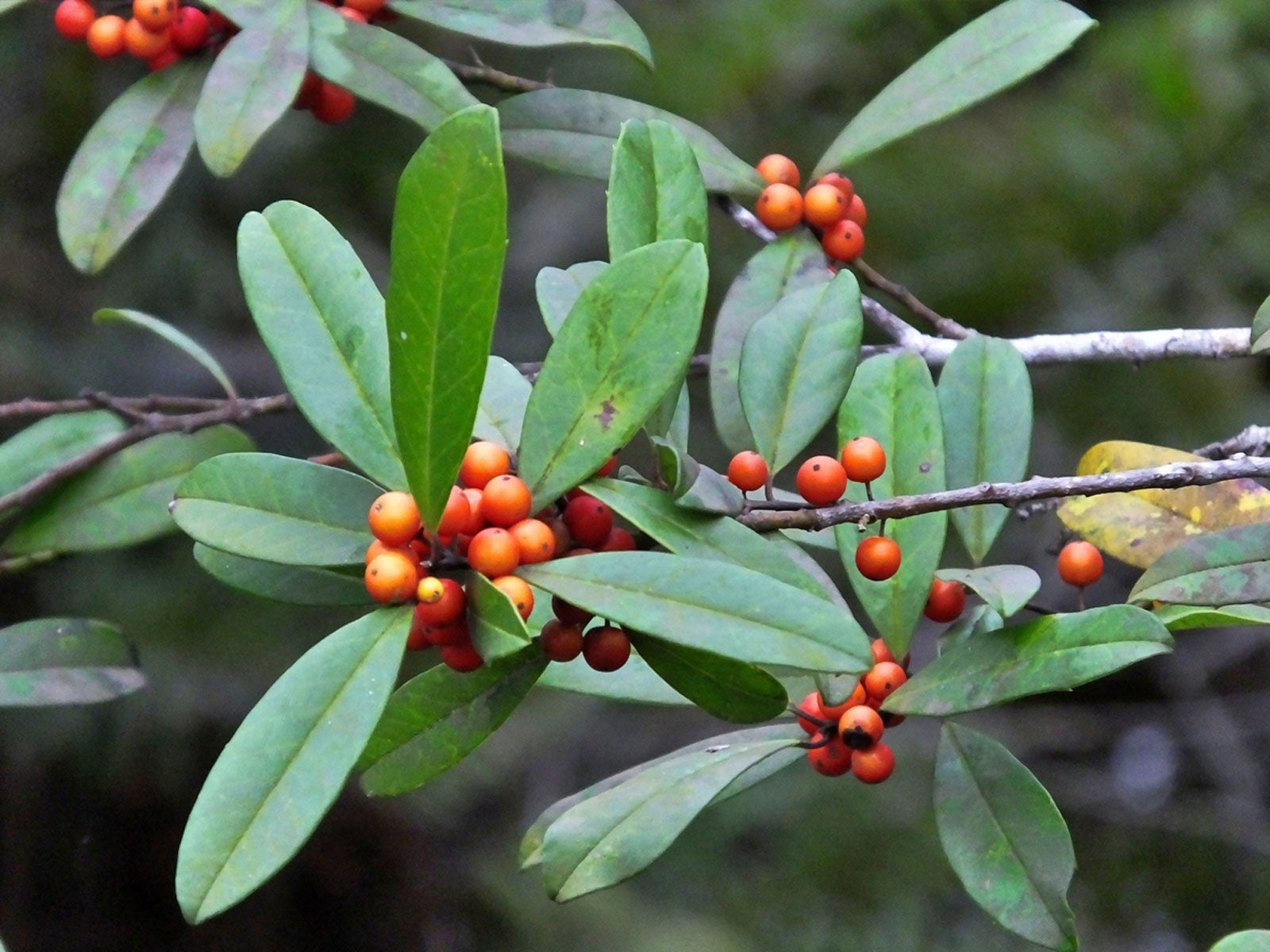Dahoon Holly Care: How To Plant Dahoon Holly Trees


If you're looking for an interesting species of tree for your landscaping needs, consider dahoon holly trees (Ilex cassine). This native holly species typically stays under 30 feet (9 m.) in height when used as a landscape tree. It has a moderate growth rate and at maximum height it will reach about a 12 to 15 foot (4-4.5 m.) spread.
At this size, dahoon holly trees are big enough to provide an attractive amount of shade, but not so big they take over the yard or totally hide the front of the house. Additionally, when grown in pairs (one male and one female), dahoon hollies produce an abundance of red berries that adorn the branches in fall and winter. These berries provide food for wildlife and will attract various bird species and squirrels.
Where to Plant Dahoon Holly
Dahoon holly trees, also known as cassena, are warm climate evergreens and are hardy in USDA zones 7 to 11. They are native to North American swamplands and bogs and thrive in moist soils. Once established, they are tolerant of drier conditions but tend to stay smaller in stature.
Due to its moderate size and tolerance of salt spray, the dahoon holly makes excellent specimen trees for planting around parking lots, in highway median strips, and alongside residential streets and sidewalks. The dahoon holly has been very adaptable of urban settings and can endure the air pollution commonly found in cities.
How to Plant Dahoon Holly
Dahoon holly trees prefer full sun, but easily adapts to partial shady locations. They grow well in a variety of soil types including clay, loamy, or sandy conditions. Homeowners should locate underground utilities before digging. Consideration should be given to the overall height and width of the mature tree when selecting a location near buildings, other trees, and overhead power lines.
When planting dahoon holly trees, dig a hole the depth of its container or root ball, but two to three times as wide. Carefully remove the tree from the container and gently set it in the hole. Backfill the hole with native soil, ensuring the base of the tree is slightly above ground level. Firmly pack the soil as you go to prevent air pockets.
Thoroughly water the tree and continue to regularly provide water for the first year. Applying a 2 to 3 inch (5-8 cm.) layer of mulch will help the soil retain moisture.
Gardening tips, videos, info and more delivered right to your inbox!
Sign up for the Gardening Know How newsletter today and receive a free copy of our e-book "How to Grow Delicious Tomatoes".
Dahoon Holly Care
Dahoon holly care is fairly straightforward. Once established, they require very little maintenance pruning. Their branches are resistant to breakage and, as an evergreen species, there are no autumn leaves to clean up. Additionally, the berries remain on the tree and don’t create a litter issue.
Dahoon holly information indicates this species has few issues with pests or diseases. It’s also not known to be susceptible to verticillium wilt. Overall, it you’re looking for a low maintenance moderately-sized tree that’s beneficial to wildlife, the dahoon holly might meet your needs.

Laura Miller has been gardening all her life. Holding a degree in Biology, Nutrition, and Agriculture, Laura's area of expertise is vegetables, herbs, and all things edible. She lives in Ohio.
-
 Looking For Plants To Give You The Soft And Fuzzies? Try These 5 Fuzzy Leaf Plant Options
Looking For Plants To Give You The Soft And Fuzzies? Try These 5 Fuzzy Leaf Plant OptionsLovers of texture, drama, silver foliage and tactile plants will adore these special sensory garden additions. These fuzzy leaf plant options will leave you all aglow
By Susan Albert
-
 Get Ready For A Summer Of Hummers! Grow These Full Sun Hummingbird Plants and Flowers
Get Ready For A Summer Of Hummers! Grow These Full Sun Hummingbird Plants and FlowersIf you’re lucky enough to enjoy a sunny backyard, make sure you are maxing out on your pollinator opportunities and grow these full sun hummingbird plants and flowers
By Tonya Barnett